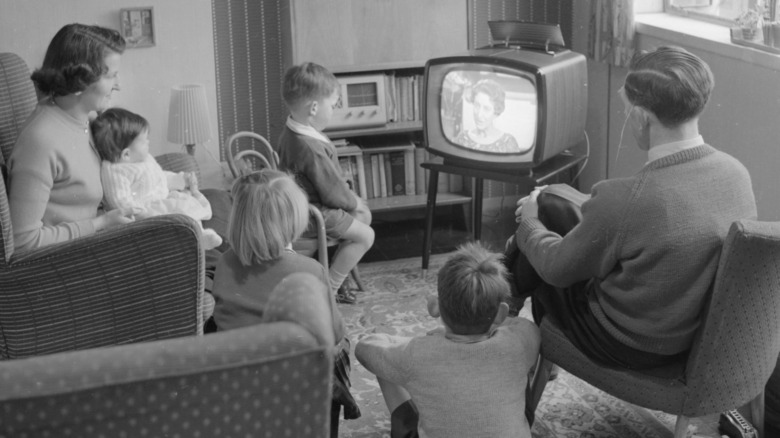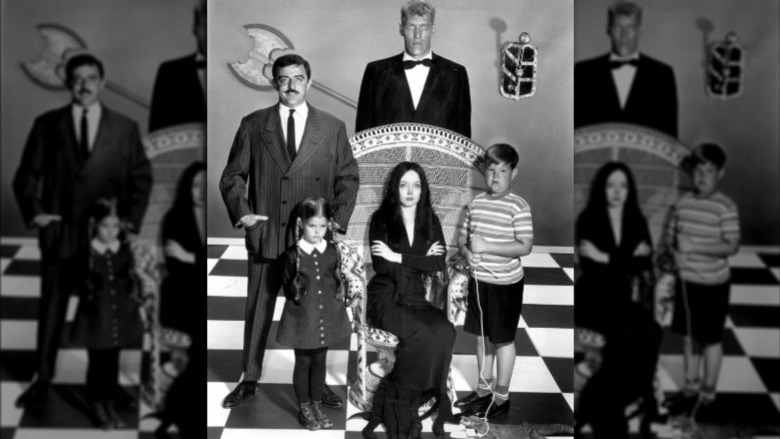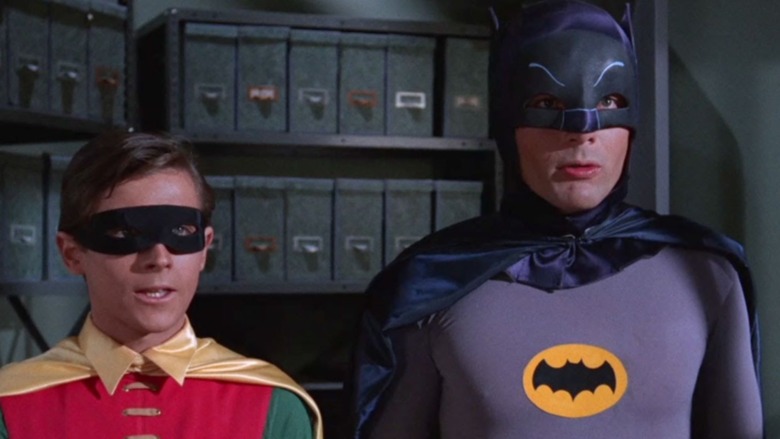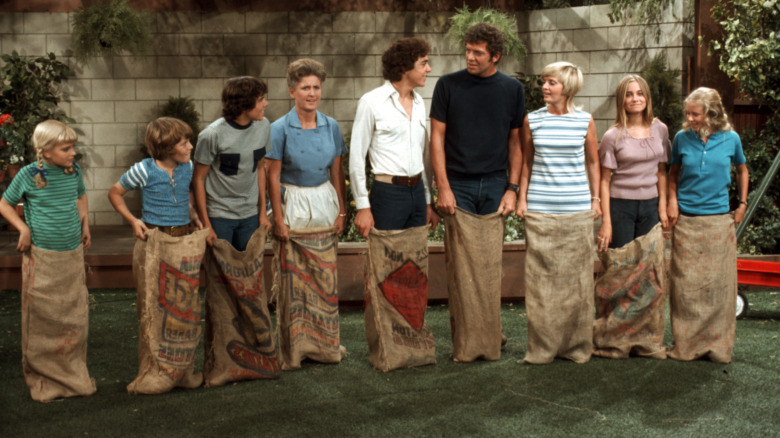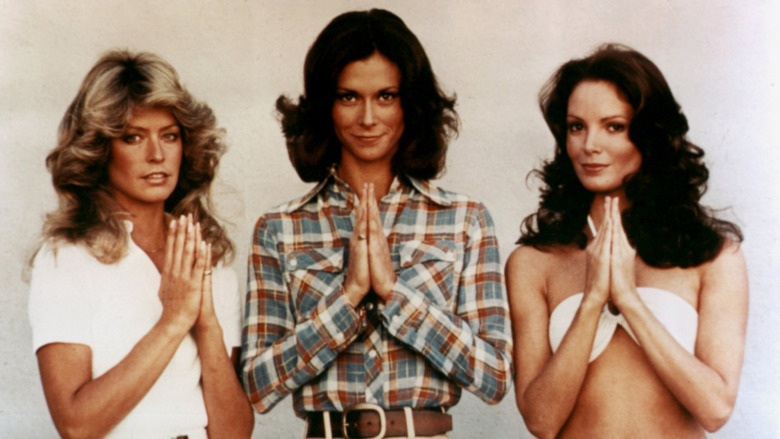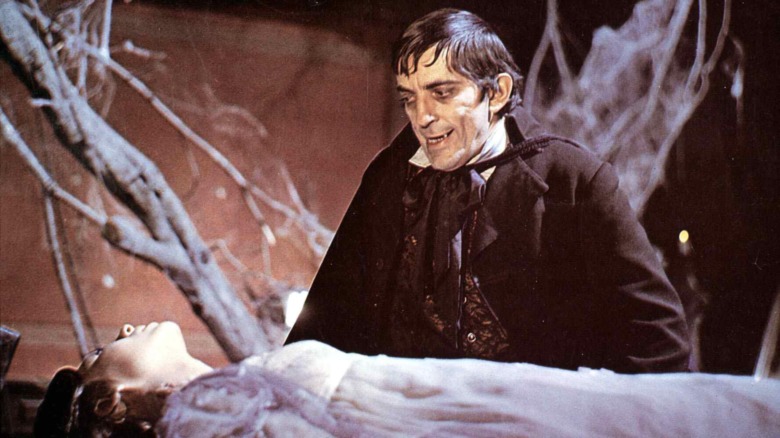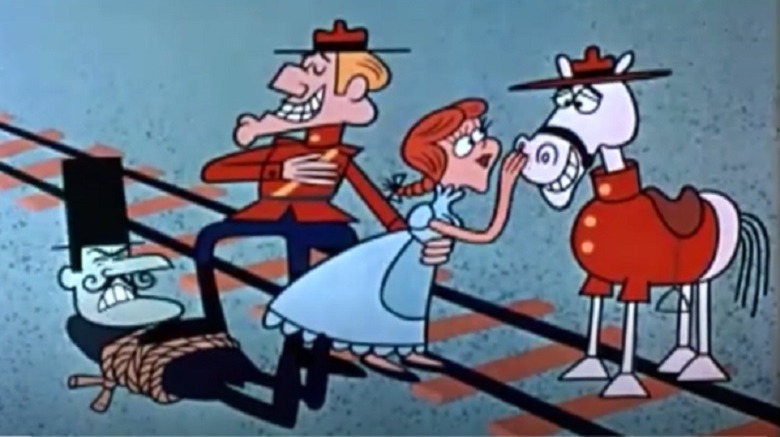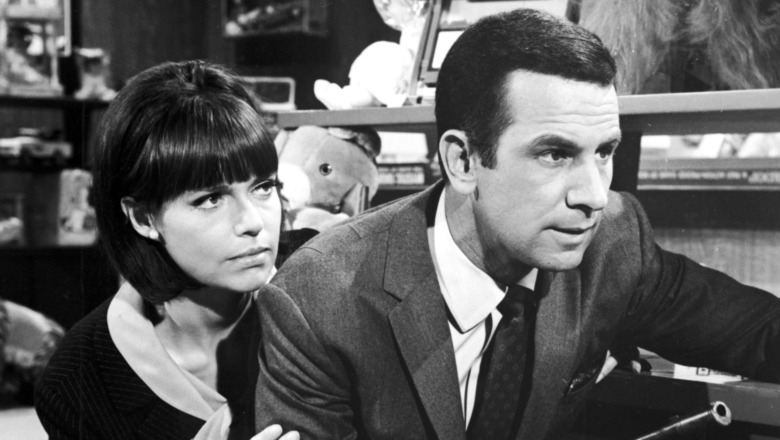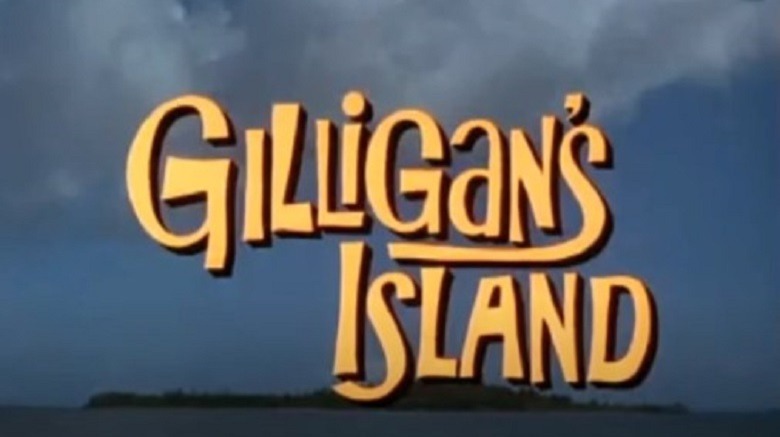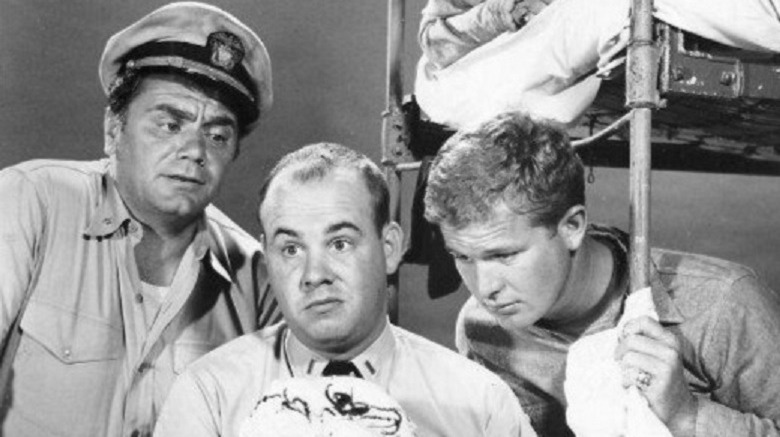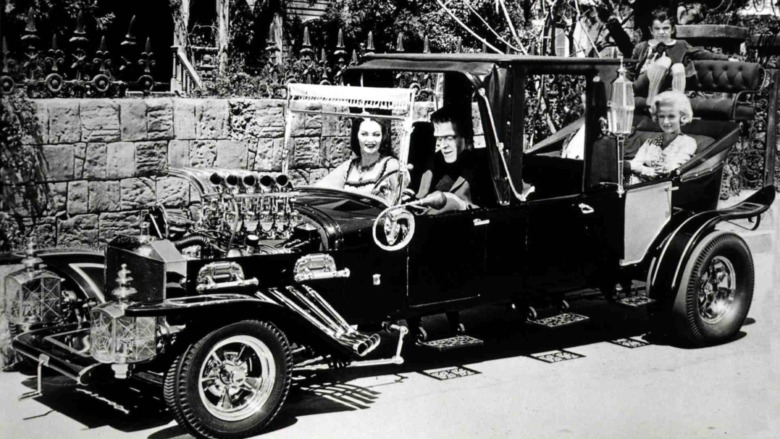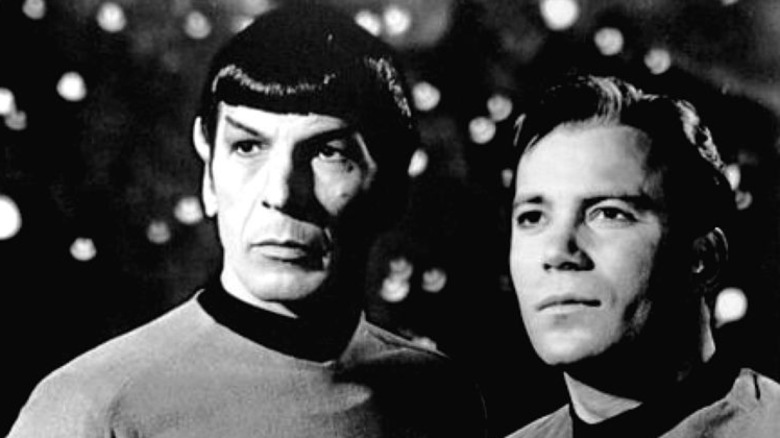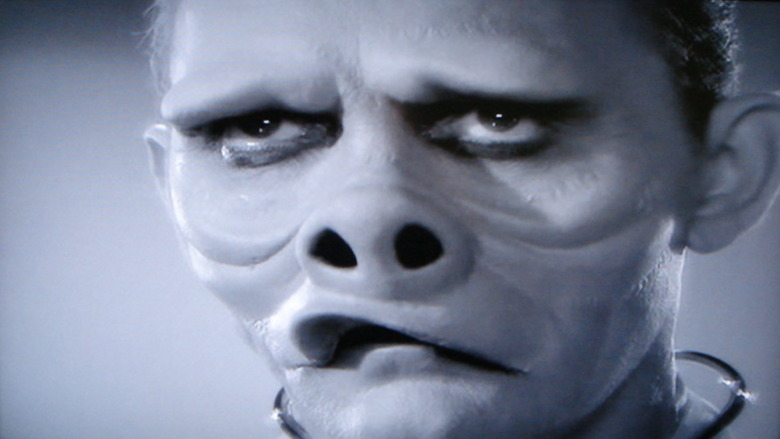Popular Cult Classic TV Shows That Originally Ran For 5 Seasons Or Less
MeTV. Nickelodeon. TMC. TV Land. These are just some of the networks out there that broadcast the reruns, some of them 50 or more years old, that we love from our childhoods. According to Statista, Americans watch an average of more than four hours of television per day. And of that, says NPR, some 54 percent say they enjoy watching a favorite, familiar show. Why are we stuck on classic television? The Guardian submits that in a time when we have millions of entertainment choices in our world, "most of us still want to watch half-hour shows about vaguely likable people in which everything turns out OK."
Classic TV is our own personal brand of comfort food for the mind. We know the characters and their families, and we know how their daily lives are going to go when we tune in. Sure, we love a number of new television shows that take place in the now, but there is something about classic TV that USA Today says gives us comfort in times of stress. Maybe that explains why Hollywood Insider says we've been "knee-deep in the era of remakes" for quite a few years now. That of course includes shows of long ago, many of which met their demise before they should have but are now wildly popular. Read on for some of the most iconic television shows that remain true cult classics today.
The creepy and kooky Addams Family
The Addams Family was based on the dark-humored works of cartoonist Charles Addams, whose delightfully disturbing cartoons first appeared in The New Yorker in 1938 and resulted in dozens of books. Addams was the creator of the iconic show, which centered around Gomez and Morticia Addams, their macabre but loving family, the family butler Lurch, and a housemate called "Thing" that consisted solely of a hand that occasionally popped out of boxes sitting around the house and brought in the mail. Much of the show was filmed at 21 Chester Place in Los Angeles when it first debuted in 1964 (which sadly has since been torn down).
For two glorious years, The Addams Family came into American living rooms each week. Unfortunately, the show was canceled in 1966 after just 64 episodes because the network believed the public was "burned out" on it as well as a competing show, The Munsters. Fast forward to the 1970's when, according to writer Sabrina Newman, the "goth subculture" in America embraced all things dark, deathly, and dreadful. Hollywood soon caught onto the movement and produced two films, The Addams Family and Addams Family Values, in 1991 and 1993. An animated version, also titled The Addams Family, appeared in 2019. An as-yet-untitled sequel to that one is reported to be in post-production as of 2021. Stay tuned.
Batman remains a superhero favorite
The first word in Neal Hefti's Batman theme song in 1966 was of course, "Batman." The only other two words? "Na," repeated over and over as the song played, and "da" signifying the finale of the tune. Created by cartoon artist Bob Kane and writer Bill Finger for National Comics (now known as DC Comics) in 1939, the caped crusader and his little buddy Robin first appeared on film as early as 1943. That first Batman movie was actually made up of 15 serials on one reel for over four hours of non-stop action as crime was thwarted around Gotham City. A little over two decades later, audiences were happily singing the theme song to the show as little kids clamored for their very own Batman outfit.
Although Batman aired twice a week, the show only lasted two years. In addition to the "outrageous death traps, ingenious gadgets, an army of dastardly villains, and femme fatales" according to Den of Geek, the show had "defined the comic book adaptation" for years. So what went wrong? Budget cuts and creative differences, says Warped Factor. Hollywood wasn't done with Batman, however; in 1989 the Dark Knight made a reprise with a vengeance, resulting in numerous films and spin-off shows that remain on the air even today.
The Brady Bunch defined an American family
In 1965, producer Sherwood Schwartz read that 31 percent of American marriages included children from a previous marriage. That, said Schwartz, "indicated a remarkable sociological change in our country." Three years later, after the movie Yours, Mine and Ours approached that very subject and did well at the box office, ABC accepted Schwartz's idea to create a show about a blended family: The Brady Bunch. Five years of happy family episodes later, Marcia and Greg Brady were graduating high school and would likely soon leave the family nest. What to do?
The Cheat Sheet explains that the Brady Bunch was actually canceled not because of the age factor but because of falling ratings and the task of renegotiating new contracts with at least nine actors. Today, Woman's World cites the show as a "pop culture" icon, its characters forever young and still appealing to audiences on many levels. Beginning in 1976, there were several semi-successful spin-offs, including the hilarious The Brady Bunch Movie in 1995 that spoofed the original series. ("One bathroom for nine people?" queries character Steve Yeager. "And I never did see a toilet.") Yes, the Bradys remain so well-loved that in 2018, HGTV purchased the fictional family's real home in Studio City, California, rounded up the original Brady kid actors, and remodeled the structure to create A Very Brady Renovation.
The sexy and not-so feminist Charlie's Angels
"Once upon a time, there were three little girls who went to the police academy," begin the opening lines of Charlie's Angels in 1976, a hypocrisy of a show if ever there was one. The show starring three "detectives" (originally played by Farrah Fawcett, Kate Jackson, and Jaclyn Smith) premiered with the promise of representing the feminism of the time. But the ladies were condescendingly bossed by a mysterious man named Charlie who never appeared onscreen, and it was pretty obvious that Fawcett's Jill Munroe never wore a bra. Notable too is that actor John Forsythe (Charlie) was paid more than any of the other actors. So much for equal rights.
Financial and creative differences soon led Fawcett to leave Charlie's Angels in 1977. Five years and six angels later, the show was finally canceled. The male producers of Hollywood continued kicking at it awhile longer; in 1988-89 failed attempts were made to reboot the show with a different title. Then there was the movie in 2000 starring Drew Barrymore, Cameron Diaz, and Lucy Liu, which Roger Ebert called "a movie without a brain in its three pretty little heads." Another TV show in 2011 lasted just four episodes, and yet another reboot in 2019 also was shelved, reports Entertainment Weekly. Still, the original episodes remain good for a laugh about the olden days when women were still seen as objects.
Dark Shadows was the first gothic soap opera
In 1966, ABC produced Dark Shadows, which focused on governess Victoria Winters who comes to work at the remote Collinwood mansion but is soon dealing with the manor's owner Barnabas Collins—a vampire. In a time when shows like The Man from U.N.C.L.E. and Star Trek were exploring the unknown universe, Dark Shadows "appealed heavily" to science fiction and fantasy fans. Dan Curtis, the show's creator, has been cited as fueling the storyline to create daytime television's most unique soap opera. The show even spawned a series of Dark Shadows books written by Marilyn Ross.
When a burned-out Curtis left the show, Dark Shadows foundered and was finally canceled in 1971. Twenty years later a revival was attempted but only lasted one season. Even so, Tanner World includes Dark Shadows on the list of top 25 "cults shows." And fans of the show held out great hope for Tim Burton's film adaptation starring Johnny Depp in 2012. The film was only moderately successful: critic Anthony Lane called it "a long, expensive joke in search of a purpose" while Christopher Orr promised that "fans of Depp's past collusions with Burton will find their rewards along the way." There are no other plans for Dark Shadows at the moment, but you can still buy the original series on DVD, which of course comes in a coffin-shaped box.
Dudley Do-Right was campy fun
In 1959, creator Bill Scott came up with a silly cartoon which appealed to children and parents alike: Dudley Do-Right, a bumbling member of the Royal Canadian Mounted Police who first appeared on The Bullwinkle Show. Do-Right's biography explains that the loveable lame-headed policeman was handsome yet naïve, constantly battling bad guy Snidely Whiplash in defense of Do-Right's love interest, Nell Fenwick—the daughter of police inspector Ray Fenwick. Yet his love for Nell was never really requited, since the demure red-head was much more infatuated with Do-Right's nameless but intelligent horse.
The cartoons, some of which still play on YouTube, had such wide appeal that in 1969, Dudley got his own show. The Dudley Do-Right Show only ran for about a year, but Dudley remained in the minds of fans to the extent that reruns ran for several more years under the title Dudley Do-Right and His Friends. The hapless Mountie was recreated in the 1999 film, Dudley Do-Right starring Brendan Fraser and Sarah Jessica Parker. The movie received mixed reviews. One critic called the cartoons and movie a rip-off of some 1930's movies starring Nelson Eddy and Jeanette MacDonald, while another called it "surprisingly pleasant." Fraser himself boldly proposed that the film was "political satire" that "speaks volumes about capitalism."
Would you believe Get Smart was inspired by James Bond?
In 1965, comedic icons Mel Brooks and Buck Henry decided to spoof the highly popular James Bond films that had premiered in 1962 with Get Smart, the adventures of Agent 86 (Don Adams) as he teamed up with the beautiful Agent 99 (Barbara Feldon) to fight the evil crime syndicate KAOS. I Love Get Smart says that ABC didn't think it would be funny, but NBC did; in fact the producers were so sure of Get Smart's success that the pilot was actually a made-for-TV movie, A Secret Agent's Dilemma, or a Clear Case of Mind Over Mata Hari. Get Smart was a break-out role for Adams, and his character's signature line, "Would you believe..." became a national catchphrase.
After the show was canceled in 1970, it became a highly popular rerun, says Would You Believe. But a 1980 reprise film, The Nude Bomb, virtually bombed itself at the theater. Then there was Get Smart Again!, a reunion TV film in 1989 which was successful, and the reprise of the original Get Smart in 1995, which was not. Thank goodness for 2008's Get Smart starring Steve Carell, Anne Hathaway, Dwayne "The Rock" Johnson, Alan Arkin, and Terence Stamp. Warner Brothers was smart to keep Brooks and Henry aboard as advisors, resulting in a fun summer film that Roger Ebert called "funny, exciting, preposterous, [and] great to look at."
Gilligan's Island was canceled to make room for Gunsmoke
That's right. CBS's William Paley and his wife were largely responsible for the cancelation of Gilligan's Island in 1967 after just four years of the show, in favor of Gunsmoke. Today, however, the series remains at number 18 on the list of the most popular reruns still on television, according to CBS. Indeed, the Daily Herald submits that the lighthearted story of the seven stranded castaways (Gilligan, the Skipper too, the Millionaire and his Wife, the Movie Star, the Professor, and Mary Ann), "didn't pose any great social questions; it simply parodied the quirks of human relations. There were no preachy lessons on racism, substance abuse, or other ills."
So what happened when the show went off the air, other than over 50 years of reruns? Well, 1978's TV movie, Rescue from Gilligan's Island, covered how the castaways adjusted once they were rescued. Audience reviewers, according to Rotten Tomatoes, mainly watched the crew get "tossed back into their troublesome lives" for some sort of closure and mostly concluded the movie wasn't worth watching. Then there was 2004's The Real Gilligan's Island, a reality show that lasted only one season. But Gilligan fans are still holding out for an all new Gilligan's Island movie which was being planned as of 2019.
McHale's Navy, the misfit heroes
Of all of the comedies making fun of World War II (think Hogan's Heroes and Operation Petticoat, just to name a few), the characters of McHale's Navy served as the Dudley Do-Rights of the sea. Starring Tim Conway and Ernest Borgnine, the show centered on a group of naval misfits floating around the South Pacific whose antics constantly got them in trouble—until they inadvertently saved the day. It was Conway's break-out role, says Deadline, earning him an Emmy in 1963. Most interesting is that while the show was still on the air between 1962 and 1966, there were two spin-off movies: McHale's Navy (1964), and McHale's Navy Joins the Air Force (1965).
The reason McHale's Navy was canceled is equally interesting. In 2013, Conway told Fox News that the original show was in black-and-white, and the producers feared it wouldn't survive the transition to color television. "They thought they would never be able to resell the four years in black and white," said Conway, "so they cancelled it." The show lay dormant until 1997, when an all new McHale's Navy premiered in theaters. The new movie focused on a retired Navy officer who goes back into service with (surprise) a new group of "misfit sailors." The film starred Tom Arnold, but Borgnine also made an appearance.
The Munsters made monsters funny
It was no coincidence that The Munsters and The Addams Family debuted side by side, and also ended side by side. TV historian Stephen Cox, who wrote a book on each show, explained that The Munsters was already in pre-production for CBS in 1964 when producer David Levy (no relation to the talented Levy family of Schitt's Creek) of ABC heard about it and decided to team up with Charles Addams on a similar show. America didn't seem to mind, and The Munsters—about a Frankenstein figure and his ethereally gothic family going about everyday life—proved quite successful. A "normal" niece, Marilyn Munster, was cast as the oddball in the family for extra fun.
Actor Butch Patrick, who played Eddie Munster, blamed Batman for stealing the ratings which resulted in The Munsters' cancelation in 1966. Not to worry; almost immediately a movie, Munster, Go Home! came out, followed by The Munsters' Revenge in 1981, a brief series reprise titled The Munsters Today in 1987, Here Come the Munsters in 1995, The Munsters' Scary Little Christmas in 1996, and Mockingbird Lane in 2012. The riff from The Munsters' theme song can be heard on Fallout Boy's 2015 song, "Uma Thurman," and as of 2021, there's a Munsters movie in the works under none other than director Rob Zombie, according to Movie Web. How very appropriate.
Star Trek, like space, seems infinite
Star Trek has been morphed over more than Odo, one of many beloved characters on the show. The original series ran on NBC from 1966 to 1969, but Screen Rant says it consistently fell into third place behind shows on CBS and ABC (remember, there was no cable yet; these were the only networks available.) Following threats to cancel Star Trek after the second season, fans were relieved to see a third season, but it only lasted a year. But not even they could predict that Captain Kirk and his crew would find themselves highly popular in syndication, nor that the show would spawn numerous books, movies, TV shows, and video games in the future.
It is no wonder that Star Trek appears on lists like TV Show Pilot as one of TV shows with the most spin-offs. They are way too long to list here, but the Internet Movie Database shows that in the last 50 years, 1971 to 2021, Trekkies have seen the debut of a new Star Trek movie or show or game an amazing 34 times. One problem for fans who weren't around for the original series is watching the story of Star Trek unfold in chronological order, which TechRadar explains "would be daunting for even the most decorated of starship captains." It can be done though, and the site also explains the "sequels, prequels, and bits in between."
The Twilight Zone was a critical success
"There is a fifth dimension beyond that which is known to man," explains a sometimes smoking (yes, smoking!) Rod Serling in the opening of 1959's bizarre sci-fi series. "It is an area which we call the Twilight Zone." A chilling mix of fantasy, horror, thriller, and science fiction, the show quickly caught the attention of both critics and the audience. Five years in however, creator Serling was regarded as an "angry young man" whose exploration of the political and social issues of the day on the show was often grueling. When CBS canceled The Twilight Zone five years in, an exhausted Serling threw in the towel and went on to create two other popular projects, Planet of the Apes and Night Gallery.
Fans of the old show were elated with Twilight Zone: The Movie in 1983, which Rotten Tomatoes panned as suffering "from the typical anthology-film highs and lows" but overall was pretty good. And a series revival in 1985 lasted three seasons. A second attempt in 2019 was canceled after just two seasons, says SyFy Wire, but didn't say why. Film School Rejects submits that the old Twilight Zone was great in black and white television, a treatment that was used in the modern series for only one episode titled "Replay." It was noted that the "reboot is certainly more chilling when it's stripped of color," but the producers didn't get that memo.
